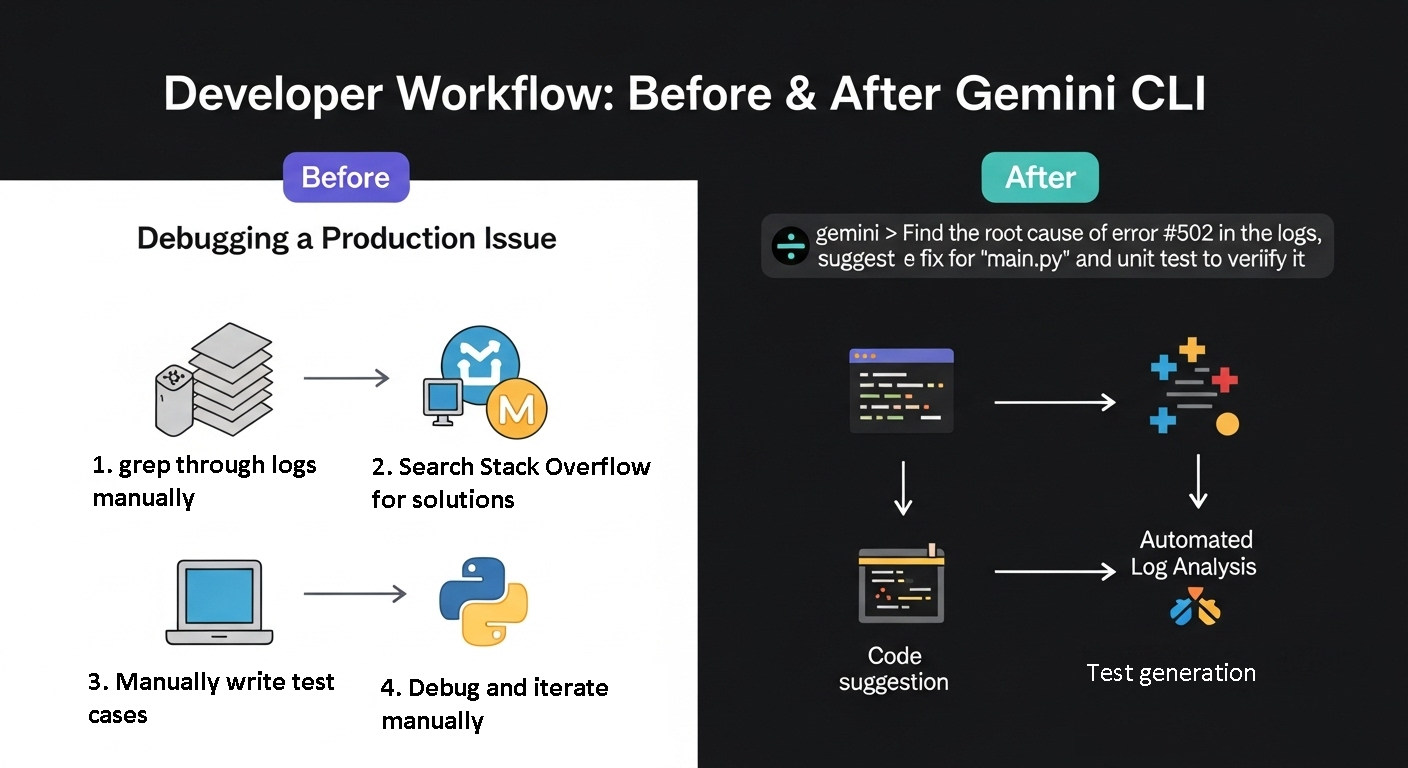Introduction: The CLI Reimagined as an AI Agent
The Gemini CLI represents a significant evolution beyond traditional command-line tools, operating as an open-source AI agent rather than a simple chat interface (Source 4). Its core value is providing developers direct terminal access to powerful models like Gemini 1.5 Pro and its 1M token context window. Google offers an unparalleled free tier for individuals using a personal account, permitting 60 requests per minute and 1,000 per day (Source 4). While various community alternatives exist, the official Node.js-based Google CLI provides a robust, first-party solution.
Installation and Authentication: The 60-Second Setup
To get started with the official CLI, run npx @google/generative-ai/gemini. The default gemini command authenticates with your personal Google account for free tier access. For specific models or higher capacity, use an API key by setting an environment variable: export GEMINI_API_KEY="YOUR_API_KEY". Note that the community Go-based CLI, reugn/gemini-cli, requires an API key by default.
Core Capabilities: From Code Analysis to Multimodal Interaction
The CLI's power lies in practical, large-scale interaction. It analyzes and edits codebases far exceeding the 1M token context window; simply ask > Describe the main pieces of this system's architecture. Multimodal capabilities allow scaffolding applications directly from PDFs or sketches. For operations, it automates complex Git rebases and queries pull requests. It also interacts with your local system for tasks like file conversion or data extraction, such as > Organise my PDF invoices by month of expenditure. These actions are enhanced by built-in tools and grounded with Google Search for accuracy.

Solving Real-World Problems: Advanced Scenarios
Tackling legacy code onboarding, Gemini generates strategic migration plans directly within a repo: > Help me migrate this codebase to the latest version of Java. Start with a plan. To overcome cross-tool friction, it automates complex workflows by orchestrating multiple applications: > Make me a slide deck showing the git history from the last 7 days, grouped by feature and team member. For repetitive DevOps tasks, it executes non-interactive scripts to manage system operations: > Convert all the images in this directory to png, and rename them to use dates from the exif data.
The Extensible Ecosystem: MCP and Open Source
Extensibility is built on the Model Context Protocol (MCP), a mechanism that connects the CLI to local and remote tools by functioning as a ReAct loop agent (Source 3); this protocol also powers features in the Gemini Code Assist VS Code extension. The official CLI is fully open source (Apache 2.0) on GitHub, welcoming bug reports, feature suggestions, and code improvements, while allowing system prompt customization via a GEMINI.md file (Source 4). This positions the Gemini CLI not as a static product, but as a foundational, extensible platform for AI-native development.
